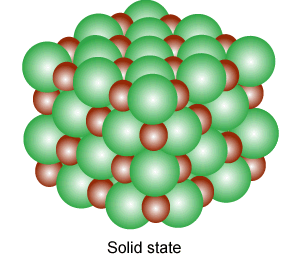For a BCC structure, if a = 351 pm, find r. Lithium forms a BCC structure having an edge length of a unit cell 351 pm, then find the atomic radius of lithium.
For a BCC structure, if a = 351 pm, find r. Lithium forms a BCC structure having an edge length of a unit cell 351 pm, then find the atomic radius of lithium.
Solution and Explanation
Relationship between the lattice constant (a) and atomic radius (r) for a BCC structure:
For a body-centered cubic (BCC) structure, the relationship between the lattice constant \( a \) and the atomic radius \( r \) is given by:
\[ a = \frac{4 \sqrt{2} r}{3} \]Step 1: Solve for r:
To find the atomic radius \( r \), we can rearrange the formula:
Step 2: Substitute the given value of \( a \):
The given lattice constant \( a \) for lithium is 351 pm (or 3.51 Å). Substituting this value into the equation, we get:
Step 3: Simplify the expression:
Now, simplify the expression:
Next, calculate \( 4 \sqrt{2} \) which equals approximately 5.656, so we get:
\[ r \approx \frac{10.53}{5.656} \, \text{Å} \approx 1.86 \, \text{Å} \]Final Answer:
Therefore, the atomic radius of lithium in its BCC structure is approximately 1.53 Å.
Top Questions on The solid state
- A metal crystallizes in simple cubic lattice. The volume of one unit cell is \( 6.4 \times 10^{-7} \, \text{pm}^3 \). What is the radius of the metal atom in pm?
- AP EAPCET - 2025
- Chemistry
- The solid state
- A metal crystallises in two cubic phases, fcc and bcc with edge lengths 3.5 Å and 3 Å respectively. The ratio of densities of fcc and bcc is approximately
- TS EAMCET - 2025
- Chemistry
- The solid state
- The percentage of free space in a body-centred cubic unit cell is
- Bihar Board XII - 2025
- Chemistry
- The solid state
- How many kinds of Bravais lattice are possible in a crystal?
- Bihar Board XII - 2025
- Chemistry
- The solid state
- The number of atoms present in body-centred cubic unit cell is
- Bihar Board XII - 2025
- Chemistry
- The solid state
Questions Asked in MHT CET exam
- Evaluate the integral: \[ \int \frac{1}{\sin^2 2x \cdot \cos^2 2x} \, dx \]
- MHT CET - 2025
- Trigonometric Identities
- Evaluate the integral: ∫ log((2 + x)2 + x) dx
- MHT CET - 2025
- physical world
- The magnetic moment of \( \text{Mn}^{3+} \) is:
- MHT CET - 2025
- d -and f -Block Elements
- For a first-order reaction, the slope of the graph between \(\log[A]\) vs time is equal to:
- MHT CET - 2025
- Order of Reaction
- What is the correct order of thermal stability of the following carbonates?
BaCO\(_3\), MgCO\(_3\), SrCO\(_3\), CaCO\(_3\)- MHT CET - 2025
- The s-Block Elements
Concepts Used:
Solid State
Solids are substances that are featured by a definite shape, volume, and high density. In the solid-state, the composed particles are arranged in several manners. Solid-state, in simple terms, means "no moving parts." Thus solid-state electronic devices are the ones inclusive of solid components that don’t change their position. Solid is a state of matter where the composed particles are arranged close to each other. The composed particles can be either atoms, molecules, or ions.

Types of Solids:
Based on the nature of the order that is present in the arrangement of their constituent particles solids can be divided into two types;
- Amorphous solids behave the same as super cool liquids due to the arrangement of constituent particles in short-range order. They are isotropic and have a broad melting point (range is about greater than 5°C).
- Crystalline solids have a fixed shape and the constituent particles are arranged in a long-range order.